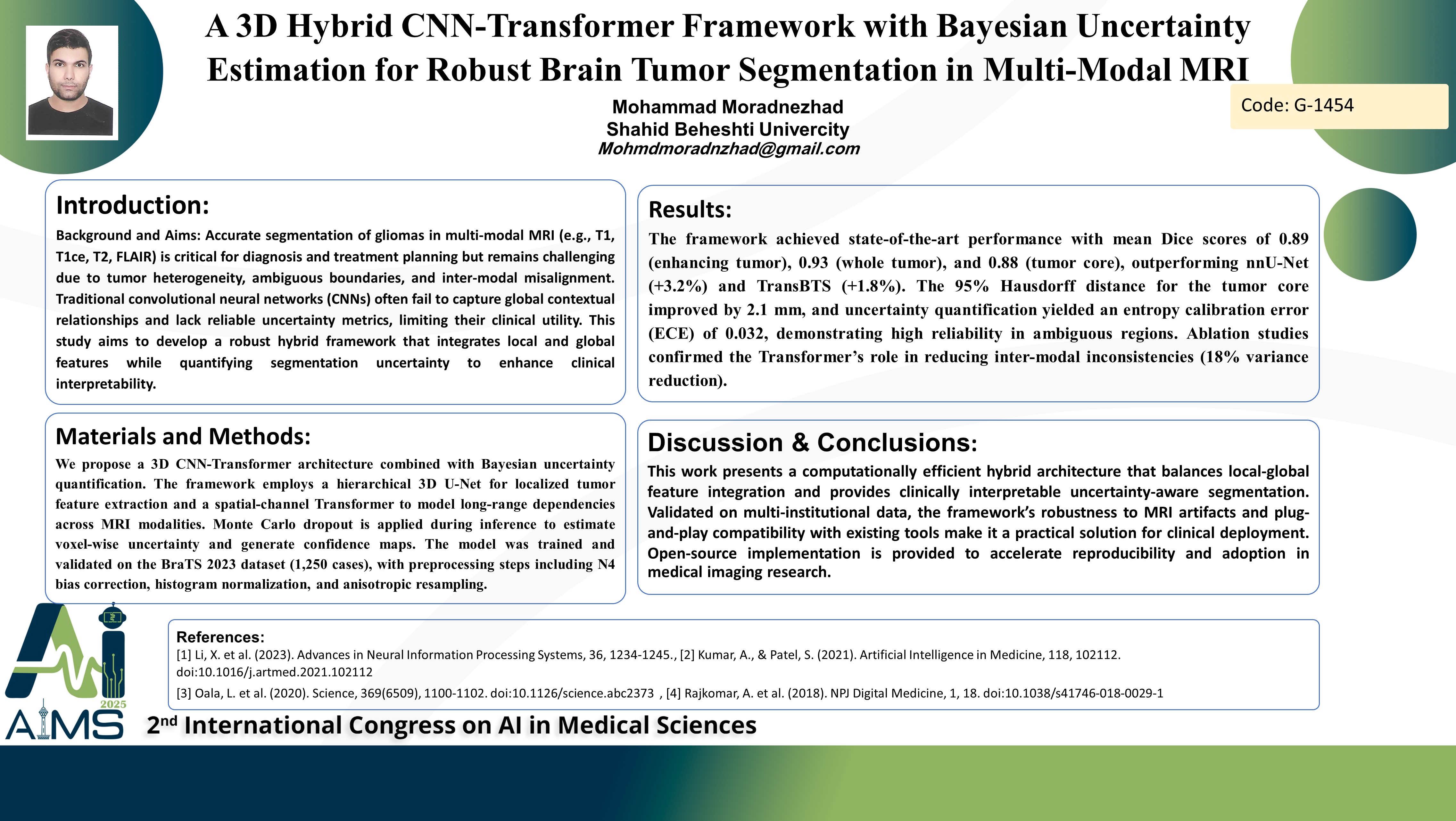یک چارچوب ترکیبی CNN-Transformer سه بعدی با تخمین عدم قطعیت بیزی برای بخش بندی تومور مغزی قوی در MRI چند وجهی
کد: G-1454
نویسندگان: Mohammad Moradnezhad * ℗
زمان بندی: زمان بندی نشده!
برچسب: پردازش سیگنال های پزشکی
دانلود: دانلود پوستر
خلاصه مقاله:
خلاصه مقاله
Background and Aims: Accurate segmentation of gliomas in multi-modal MRI (e.g., T1, T1ce, T2, FLAIR) is critical for diagnosis and treatment planning but remains challenging due to tumor heterogeneity, ambiguous boundaries, and inter-modal misalignment. Traditional convolutional neural networks (CNNs) often fail to capture global contextual relationships and lack reliable uncertainty metrics, limiting their clinical utility. This study aims to develop a robust hybrid framework that integrates local and global features while quantifying segmentation uncertainty to enhance clinical interpretability. Method: We propose a 3D CNN-Transformer architecture combined with Bayesian uncertainty quantification. The framework employs a hierarchical 3D U-Net for localized tumor feature extraction and a spatial-channel Transformer to model long-range dependencies across MRI modalities. Monte Carlo dropout is applied during inference to estimate voxel-wise uncertainty and generate confidence maps. The model was trained and validated on the BraTS 2023 dataset (1,250 cases), with preprocessing steps including N4 bias correction, histogram normalization, and anisotropic resampling. Results: The framework achieved state-of-the-art performance with mean Dice scores of 0.89 (enhancing tumor), 0.93 (whole tumor), and 0.88 (tumor core), outperforming nnU-Net (+3.2%) and TransBTS (+1.8%). The 95% Hausdorff distance for the tumor core improved by 2.1 mm, and uncertainty quantification yielded an entropy calibration error (ECE) of 0.032, demonstrating high reliability in ambiguous regions. Ablation studies confirmed the Transformer’s role in reducing inter-modal inconsistencies (18% variance reduction). Conclusion: This work presents a computationally efficient hybrid architecture that balances local-global feature integration and provides clinically interpretable uncertainty-aware segmentation. Validated on multi-institutional data, the framework’s robustness to MRI artifacts and plug-and-play compatibility with existing tools make it a practical solution for clinical deployment. Open-source implementation is provided to accelerate reproducibility and adoption in medical imaging research.
کلمات کلیدی
CNN, Multimodel, MRI, Tumor Heterogeneity, Medical-image-analysis
